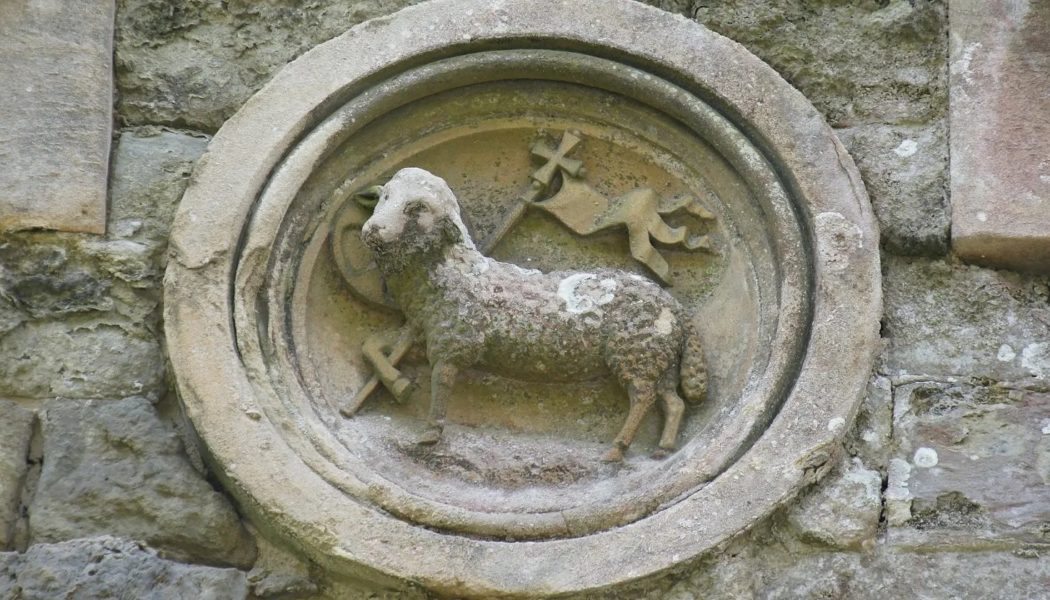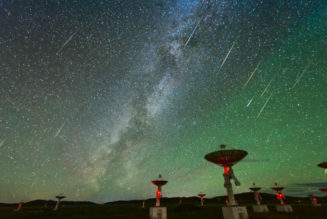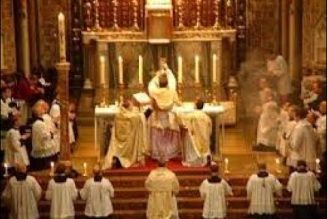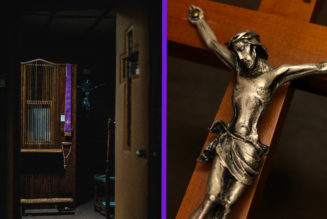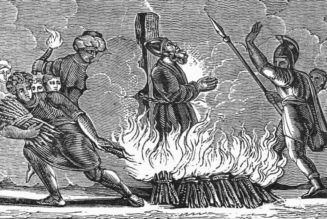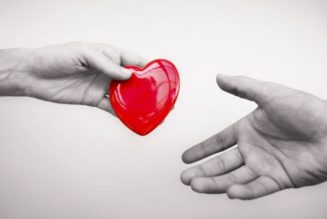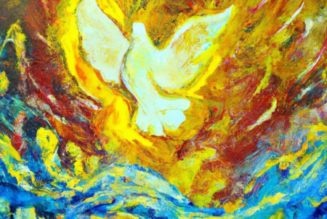
So, Lent and Easter are over. What’s next? The day that reveals what the whole point was all along: The Solemnity of the Most Holy Trinity, Trinity Sunday, Year A.
The Trinity kicked off Lent, with the Holy Spirit driving the Son into the desert to do the will of the Father despite Satan’s temptations — and the Trinity ended Lent in Holy Week, with the Father glorifying the Son on the cross, and the Son pouring forth the Holy Spirit to draw us into his life.
Most recently, Jesus gave us our Ascension marching orders and Pentecost equipped us to carry them out: “Go, therefore, and make disciples of all nations, baptizing them in the name of the Father, and of the Son, and of the Holy Spirit.”
In other words, life in the Trinity is Jesus’s entire mission, and life in the Trinity is the meaning of our mission now, too.
The readings for Trinity Sunday tell that tale, and the Church has turned them into doctrines.
The Trinity Sunday Gospel says: “For God did not send his Son into the world to condemn the world, but that the world might be saved through him.” And so the Church teaches that baptism into Christ “makes the baptized person a participant in the divine life of the Trinity” (Compendium of the Catechism, 263).
In the Second Reading, St. Paul says: “Mend your ways, encourage one another, agree with one another, live in peace, and the God of love and peace will be with you.” Following him, the Church teaches that our faith, hope and charity gives us “the capacity to live in relationship with the Trinity” (Compendium, 384).
In the First Reading, Moses stands in awe of “a merciful and gracious God, slow to anger and rich in kindness and fidelity” who “receives us as his own.” The Church teaches that, in heaven “we are fully ‘partakers of the divine nature,’ of the glory of Christ and of the joy of the Trinitarian life” (Compendium, 362).
So there you have it. Scripture and the Church agree: The Trinity embraces us, sustains us, and wants to include us fully in Trinitarian life one day. If that sounds high-minded and abstract, let’s get very concrete and practical about it — in fact, biological and psychological.
The latest science of neurology and psychology suggests that this kind of Trinitarian unity is absolutely essential to a thriving life, starting in our families.
Gabor Maté, an author and physician who has focused on addiction and trauma, has developed our understanding of how our physiology, psychology and spirituality all work together. He is not a Christian, but Catholics will recognize much truth in what he says.
“You can really say that love makes the world go round because love is the common word for attachment — connection,” he says. “Gravity itself is an attachment force. Physical gravitation pulls two bodies together, literally. Love makes the world go round in the purest physical sense — but this is also true in the psychological realm.”
In other words, the Trinitarian love that makes Three into One is mirrored throughout the universe — but especially in humanity, made in the image and likeness of God.
As Maté puts it: “The most important factor in the development of human beings is attachment, connection to another human being. As infants we are utterly helpless — more helpless than any other creature, and stay that way longer than any other creature. Without that attachment relationship we simply don’t function — we can’t live.”
To thrive as human beings we need love, real love, unconditional love. Instead, too often, that love is absent, weak, or misunderstood.
From our own first sin to our last confession — and from Ash Wednesday to Pentecost — we have seen exactly what happens when love is thwarted.
Gabor Maté describes how ruptures in our connections in early life lead to wounds that stay fresh for a lifetime. His personal story is a prime example. He was born into a Jewish family in Nazi-occupied Hungary in 1944. At the age of 1, his mother handed him over to a stranger to save his life. When he reunited with his mother weeks later, he refused to even look at her for days.
His mother did what she did to save him, but his pre-verbal, unreasoning infant mind saw it as a betrayal. The “abandonment, rage, and despair” of that early experience affects him to this day, he says, and causes a fresh wound when he senses history repeating itself.
Nazi occupation is an extreme example, but Maté shows that wounds of misunderstanding, inattention, and failed love manifest themselves in the mental, physical and spiritual health of each of us in some way. It’s not the character of the trauma that counts — it’s the way we receive it when we don’t fully understand what is going on.
Our early innocence was spoiled and thwarted — by our own sin, our loved ones’ sins, or society’s sins. Like Adam and Eve, God meant for each of us to be innocent, but sin started a new story in us, filled with hurt and anger and hopelessness. This false story tells us that we are unlovable, unfixable, unendurable. We turn to addictions to relieve that pain, we check out mentally from relationships and responsibilities, or we take out our frustrations on others.
Sin is a force that severs connection, aggravates, and alienates; the opposite of the image of the Trinity.
But we all want to be innocent again; we long for it so much we can scarcely admit it, because we consider it impossible.
Father Isaac, a priest of the Community of the Lamb in Kansas City, Kansas, recently described how this works in every life. All sin is a betrayal of love, he said, and “The betrayal of love is a disaster.”
“I think that in our soul, there is a spiritual DNA, a memory of how God himself knows us, a nostalgia within us of how God knows us and how he knew us even before the foundation of the world,” he said.
When we look into our past, we say, “Where is innocence? Where is this being intended by God, who is nothing else but innocence?”
The crucifix is the answer we are looking for. There, Christ’s gaze rebuilds our innocence, said Father Isaac.
God knows who we really are meant to be — and we remember who we are when we look into the eyes of the innocent one who died for us. “We all know what this gaze is,” said Father Isaac. “We are all touched one time or another by a gaze of someone. A gaze for good or evil. A gaze can give life or it can take it away. The gaze of the Lamb of God is a nuptial encounter. It awakens our innocence.”
In Jesus, we find who we were meant to be: Forgiven and restored, innocent again. Our life’s mission is to return to that place. We get there through Baptism and the sacraments; we live there through faith, hope and love; and we hope to spend eternity there in heaven.
That is what the Trinity Sunday readings are referring to.
“God so loved the world that he gave his only son, so that everyone who believes in him might not perish but might have eternal life,” says the Gospel. In other words, Jesus entered the pain and sorrow and mess of our lives to reconnect us to the life of the Trinity.
He did it in the desert, where he faced the devil, and he did it on the cross, where he faces us.
The Trinity Sunday Gospel passage comes after Jesus has told Nicodemus, “Just as Moses lifted up the serpent in the desert, so must the Son of Man be lifted up.” Moses lifted up a symbol of the original sin of mankind — the deceitful, malevolent serpent — in order to help his people confront and overcome the deepest wounds in our nature.
Jesus raises himself up, “wounded but loving us still,” for us to confront our own twisted versions of our story. His loving eyes, gazing out from a body that has been bruised and torn by our sin, say that all of the unconditional love denied us in life is available to us in him. The innocence we longed for is not lost forever. It is there, with arms wide open, calling us home to a Trinity that embraces us, sustains us, and wants to include us in Trinitarian innocence forever.
Image: Alwyn Ladell, Flickr
